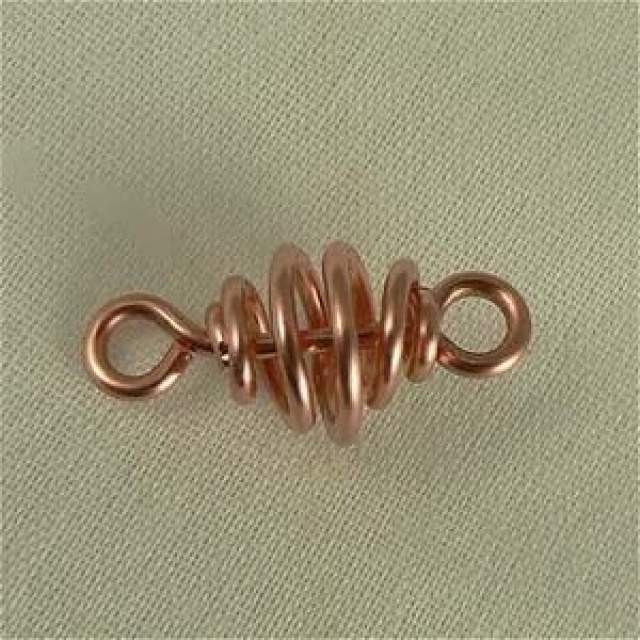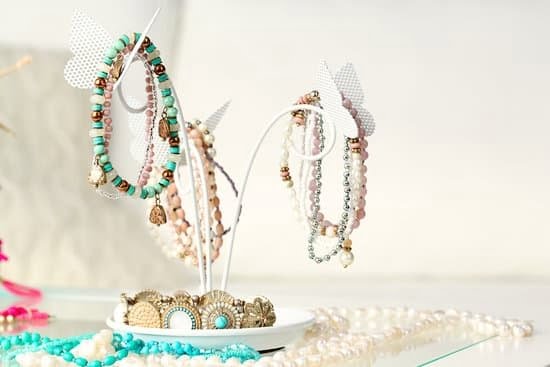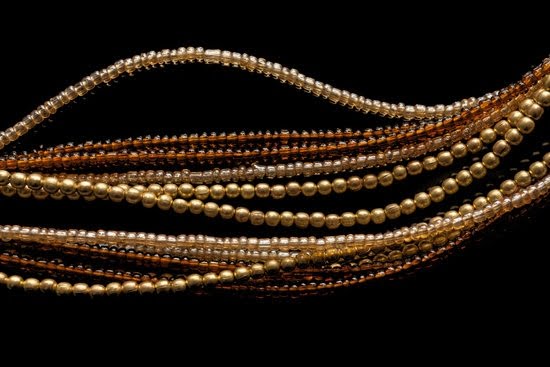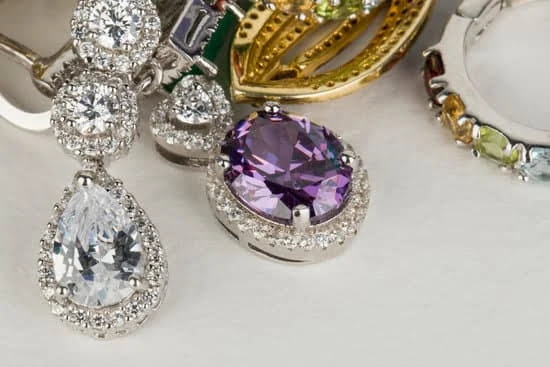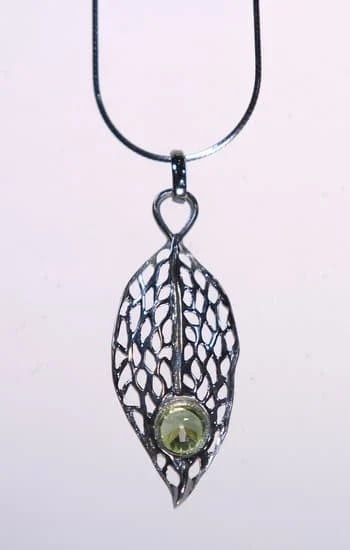Creating beautiful pieces of jewelry with wired crimps is a craft revival that has seen an uptick in popularity. This method involves taking a piece of wire and attaching crimp beads to the ends, shaping them into whatever design you choose. Making this type of jewelry requires specialized materials that can offer maximum durability. Essential materials for crimping wire include: Crimp Beads, Pliers, Memory Wire Cutters, Wire, Heating Tools and Jewellery Findings.
Crimp Beads are the core material of this style of jewelry making. They are small metal beads which can be flattened around the ends of pieces of wire using specific tools. There are several types available on the market – from the standard silver-colored plated steel or brass bead to specialty beads made from sterling silver, gold and even semi-precious stones. The right choice will depend on personal taste and budget since they vary widely in price.
Pliers are another critical part of making wire jewelry with crimps as they are used to both fasten the ends and shape them as desired. One needs flat-nose pliers for gripping and round-nose ones for forming curves in the wire (for example to create loops).
When shopping for jewellery making tools it’s important to make sure these have comfortable handles; quality materials like stainless steel; non-slip grips; box joint construction; necked ends; and smooth jaws with short beaks for finer work or longer ones for larger beads / findings (the little extras that give your designs ‘polish’).
Memory wires cutters should also be included in any wire jewellery making arsenal as these are specifically designed to cut coils quickly without distorting its shape or marring its surface texture due to their long slender blades which provide more control when cutting around tight shapes. Memory Wire is a strong pre-stretched spring steel found in many classic jewellery designs such as bangles and rings – which means specialised tools like these come in very handy.
Last but not least one must also consider what type of metal wire best suits their creation – generally either sterling silver, copper or gold depending on what look is desired and how much money you want to spend per item/project (copper being cheapest).
Another factor here is hardness: copper and bronze wires tend to bend easier while fine silver & gold wires have higher strength / resilience so take this into account when deciding what kind of finish you want your pieces to have.
Tips on How to Choose Quality Materials for Crimping
When it comes to making wire jewelry, the quality of the materials used in the crimping process is essential. Not only do you want the items to last for a long time, but they should also look great and add aesthetic value to your jewelry pieces. To get started with this art form, it’s important that you select some quality materials for crimping wire jewelry.
The first thing to consider when selecting materials for crimping wire jewelry is the type of metal being used. Copper, brass, silver and gold are some of the most commonly used metals in this type of craft.
It’s important to choose metals that are free from corrosion or other issues because they will be more durable in the end product and won’t tarnish over time. Additionally, certain types of metals may go better with a particular style of design so it pays off to do research ahead of time before you buy anything.
In addition to choosing quality metal materials for crimping wire jewelry, there is also an array of equipment and tools you may find useful during crafting projects. For instance, pairs of pliers are essential as they are needed for gripping and manipulating small pieces into place during wiring. You may want to consider purchasing specialty tools such as flat nose pliers or chain nose pliers depending on what you intend to use them for.
Also don’t forget additional pieces like a crimp tube or two, jump rings and heishi beads. All these tools will make creating wire jewelry much easier.
Additionally, don’t forget all the supplies that go along with creating unique designs. A creative eye can go a long way in helping people make beautiful pieces; finding interesting beads and charms or charms with special meaning helps add personality to each piece.
If you need inspiration there are many online resources available offering tips on fashion trends as well as helpful tutorials guiding crafters through intricate processes step-by-step. With guidance along with patience and practice anyone can create stunning works of wearable art out of simple wires – which means they must pay extra attention when selecting materials for crumpling.
Types of Crimp Tube Beads and their Uses
- Crimp covers: These are tiny covers that fit over the crimp beads and make them look like decorative metal beads. They are often the finishing touch in a wire-jewelry piece.
- Crimp tubes: The most common type of crimp bead, these cylinders get squeezed around the wire once a beaded or other component has been attached to the jewelry.
- Tubular crimps: They look like a regular tube bead but are hollow inside, which allows them to bridge two pieces of jewelry together.
Crimping is a technique used in making wire jewelry, which involves creating loops in wire to hold beads and other components securely and permanently onto the base material. Different types of crimp beads can be used for different purposes, depending on the design needs.
Crimp covers are small decorative caps which slip onto crimp beads after they have been squeezed into place. Often this is one of the final steps when making jewelry with crimp beads, adding an extra touch of decoration just like any other type of metal bead would do. In some designs, such as knotting techniques with cotton strings, they provide an additional layer of protection for tight knots made out of parallel strands.
Crimp tubes are probably the most iconic type of crimp bead – round silver and golden cylinders that fit perfectly over the ends of wires and cords holding either just one component or two connected pieces together. To achieve proper closure and tension these must be firmly compressed between special pliers so that there is no gap left between its folds; otherwise it can cause discomfort or worse, detaching itself under continuous strain on everyday wear.
Lastly tubular crimps are an alternative used mostly in necklaces when you need to bridge two sections filled with different types of beads together (maybe a bunch in one side and a single component on the opposite end). Because these appear like regular tubes from outside – albeit thinner – they give an elegant but secure connection without ruining your design aesthetics.
To use them correctly though you must insert both ends at least almost mid-size into each section before compressing them shut as failure to do so will result only on one side being properly attached.
Different Types of Crimp Covers Available
Crimp covers are an essential material for any wire jewelry maker. They add the perfect finishing touch to pieces and can be used to keep the ends of the wire secure. Crimp covers come in a variety of sizes, shapes and colors and can be found in most jewelry supply stores. Here is a list of some of the types of crimp covers available:
- Round
- Oval
- Fishhook Shaped
- Cone-Shaped
- Triangle-Shaped
- Flower-Shaped
The most common type for jewelry making applications is round crimp covers. These are available in a variety of metals such as sterling silver, gold plated and brass, as well as non-metal options such as plastic or rubberized materials. Round crimp covers are also available in different sizes that will fit standard jewelry crimping pliers. They should be used with 2mm or smaller crimping tubes that match the style being used.
Another popular shape for crimp covers is oval shaped, which gives pieces more dimension when used on finished necklaces and bracelets. They come in the same range of metals and other non-metal options as round shaped ones do, but they need slightly larger crimping tube sizes ranging from 2mm – 3mm to fit properly.
Again, it’s important to find tubes that match the style of cover being used so they don’t slip out when tension is applied when securing the jewellery piece together at the ends.
Last but not least, there are fishhook shaped covers which provide an interesting aesthetic effect to finished pieces and gives them more movement than just regular round or oval ones. Like all other styles of crimp covers these too come in a variety of finishes including silver plated, copper plated and enameled colors as well as wooden beads with artwork embedded into them for embellishment purposes.
Fishhook coated pieces require larger sized crimping tubes ranging from 3mm – 4mm depending on their size and style.
Understanding the Different Crimping Techniques
Crimp beads, also known as crimp tubes or “crimp covers”, are a very popular and essential component of wire jewelry making. They are a great way to secure two strands of wire or cord together while adding some texture and visual interest to the design.
Crimping is a smart, efficient and simply way to secure jewelry components together without having to tie knots or use glue. Depending on the project you may have different materials for crimping such as crimp rings, tubes, oval beads and flat-nosed pliers – these all do the same job in different ways.
Crimps Tubes
Most commonly used material for Crimping Jewelry is crimps tubes. Crimps tubes add texture and dimension to your jewelry designs. They can be used with fine wires or thicker cords,and come in range of sizes from 1x1mm up to 4x4mm.
First you need to insert the wire into tube tightly – when done correctly this will hold both wires securely. To close the tube press it shut using flat nose pliers, doing so will flatten the end of bead creating a secure finish and a nice aesthetic look.
Crimps Beads
Another common material for crimping is crimp beads. These beads typically look like tiny cylinders with an opening in one side – again they come in variety of sizes depending on application.
When done correctly they create secure finish on jewellery piece but without changing cording’s shape and size drastically so product looks natural When using crimp beads first you need pass cording through it then pull tight, after that you need use your flat nose pliers and squeeze sides of bead creating zigzag finish – this technique ensures that neither ends can move many becoming undone.
The final step is tucking folded tail into itself so that only round ring stays visible.
Flat Nose Pliers
When working with any kind of materials for crimping Flat Nose Plier Is necessary tool – it helps flattening ends of biscuit creating perfectly shaped results. Flat Nose has two almost flat surfaces at each ends which allows squeezing various sizes of bean forming tight connection between two nodes resulting immovable bond which requires no additional ties or glue to hold them in place securely.
This tool gives not just safer functioning but adds beautifying effect with it’s own aesthetic style.
Overall,working with materials for cumming requires decision making – analysing situation deciding which materials would best fit overall goal whilst producing outcome,which stands out yet at same time looks stylish and provides longevity results.
Techniques to Add Unique Accents with Crimps
Crimping wire jewelry is an easy and fun way to add unique accents to your designs. This technique, where little metal beads are squeezed with flat-nosed pliers, can be used to decorate plain pieces or add to existing decorations. To complete the task, you’ll need a few materials.
First, you’ll need some crimps or T-crimps. These small metal discs come in many sizes and shapes; choose the ones that best fit your design. Other materials you may choose to use include crimp covers and crimp tubes. Crimp covers hide and protect the crimps for a cleaner result while crimp tubes provide extra strength when securing multiple strands of bead cords.
You will also need needle-nose pliers for properly squeezing the contacts together and flat-nosed pliers to flatten them down into place once done compressing them. Both these tools should have at least two different sized noses so that you can get into hard-to-reach spaces as needed. Finally, you’ll want specialized cutters such as memory wire cutters or chain nose cutters, depending on what type of material you plan on using in your project.
To use these materials effectively, it’s important to understand how they interact with one another during the process. Start by understanding how tight your wire should be in order for the crimps to fit and hold onto it correctly – too loose and it won’t stay in place; too tight and it won’t secure it properly either.
Remember that when applying force with your pliers, it’s always better to apply gradual pressure with repeated glances at your progress than trying an all-in effort which often leads only to frustration. When adding decorative items like crystal beads or decorative findings around the edges of your crimps, make sure that they fit snugly around them so that everything looks neat after crimped and secured together.
Following these steps will allow DIYers who are new to making their own jewelry gain a quality final product while learning proper techniques along the way. With just a little practice combined with good quality material selections available on the market today, anyone brighten up any ordinary item with special touches all their own.
Tricks for Properly Secure and Closing Crimps
Crimping is a popular technique used to secure and close jewelry, such as clasp ends and connectors. To use this technique properly, there are several tricks that need to be explored. The first trick is using the right type of crimper for your material. There are two types of crimpers – flat-nose pliers and needle-nose pliers. Flat-nose pliers are best used for thicker materials while needle-nose pliers can work with thinner materials.
Making the Proper Crimp
The next trick is making sure that you get the correct crimp which depends on the material and design of the jewelry item that you are working on. Crimps come in all shapes and sizes which means that they can be incredibly versatile when it comes to securing different types of materials for jewelry projects.
For example, if you are working with wire, then you want to use a round crimp; however, if you’re working with chain links, then you’ll want a square or rectangular shaped crimp because these provide more support than a round one does.
Tools For Cleaning Up Your Crimps
A third important tip for successful crimping is cleaning up your crimps once they have been placed. Any tools that can help make this task easier should be employed such as pliers or wire cutters so that any excess material can easily be clipped away or snipped off. If needed, flathead screwdrivers can also come in handy when trying to get those difficult spots cleaned up from around the edges of your closed loops or jump rings.
Finishing Touches and Enhancing Your Project with Crimps
Crimping wire jewelry provides the perfect finishing touch to any project. This technique involves crimping pliers and the crimp beads used to secure your cord. Both of these materials should be chosen carefully to ensure a professional looking finished product. The pliers are used to crimp down the metal components to create a strong hold that will last for years, while the bead helps secure the connection and add style.
The most important material when it comes to crimping is of course the pliers. It is best to purchase a specialized pair of pliers specifically designed for jewelry making. These pliers have a notch at one end that allows you to place and firmly hold the crimp bead in position before compressing it with the other half of the pliers. This makes for easy and precise work on each piece of jewelry you make, leading to beautiful results every time.
In addition to the necessary pumping pliers, there are also various beads available for use in this type of jewelry making technique. Crimps come in different sizes and materials, depending on how well they need to hold, as well as what look you’re going for aesthetically. Smaller beads work great for projects with thinner cords or finer details, while larger beads are best for thicker cords or when more strength is needed at that point in the design.
Metals such as sterling silver or gold may also be used depending on what finish you’re trying to achieve on your piece It is best practice, no matter which material you choose for your project, to test their strength before committing them onto a finished piece of jewelry.
Place two pieces together and pull them away from each other; this will tell you how much stress they can take before coming apart, allowing you assess if they’d suitable for your purposes or not.
Don’t forget that any attempt at using inappropriate materials – such as plastic instead of metal – could result in an unstable structure that won’t survive long-term wear-and-tear.

Welcome to my jewelry blog! My name is Sarah and I am the owner of this blog.
I love making jewelry and sharing my creations with others.
So whether you’re someone who loves wearing jewelry yourself or simply enjoys learning about it, be sure to check out my blog for insightful posts on everything related to this exciting topic!

